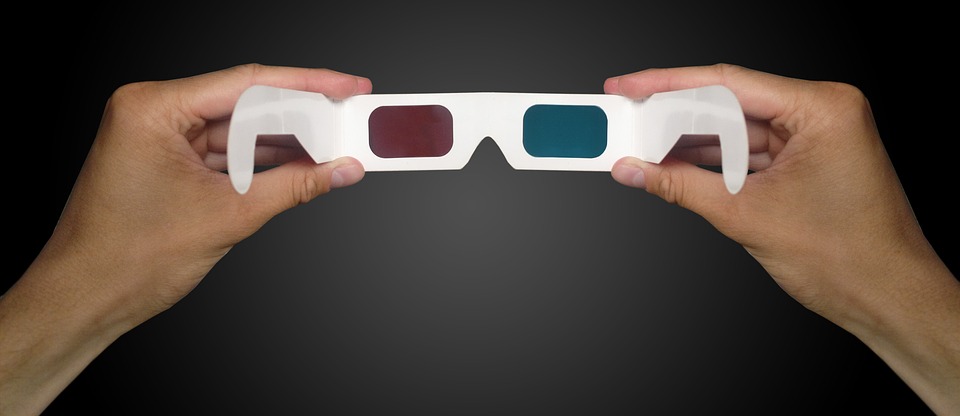The History of Anaglyph 3D Glasses

3D imagery has become commonplace in modern day life, particularly in our entertainment experiences. But, do you know how 3D visuals are produced? While technological advancement has made 3D glasses incredibly sophisticated, the underlying principles are fairly simple and universal. Here, we’ll take a peek into the history of 3D glasses.
Background of 3D Glasses
3D glasses fall into two main categories: active and passive. Active 3D glasses use battery-operated shutter lenses to control the light entering each eye. Passive 3D glasses utilize two different lenses, filtering the light passed to each eye. In both cases, the images provided to each eye are combined, in the brain, to form a single 3D image. Passive 3D glasses can be further split into several categories, the most common of which being polarized 3D glasses and anaglyph 3D glasses.
So, what are 3D anaglyph glasses vs. polarized 3D glasses? Polarized 3D glasses use two orthogonal polarizing lenses to filter the light passing to each eye. By contrast, the anaglyph type utilize chromatically opposed lenses of different colors, usually red and cyan, to filter the light passing to each eye.
Anaglyph and Stereoscopy
On the most fundamental level, anaglyph 3D glasses make use of a technique called stereoscopy to create the illusion of depth in 2D images. At approximately 2 inches apart, each of our eyes already views objects from different perspectives. This natural offset is a key component in our depth perception abilities. It allows us to fully take in the dimensions of an object because each eye is looking at something different.
Essentially, anaglyph 3D glasses utilize our built-in depth perception mechanisms to fool us into detecting depth from a 2D image. To achieve the 3D effect, the images are superimposed on each other with an offset. When an image of one color is superimposed on an image with a contrasting color, and they are viewed through corresponding colored filters, the brain processes the illusion of depth from 2D images. This is why anaglyph 3D glasses use lenses of different colors. One of the first recorded mass uses of anaglyph glasses was the showing of the 1922 film The Power of Love.
What are Anaglyph 3D Glasses Used For?
These days, active 3D glasses are more widespread in the entertainment industry, particularly with the advent of blockbuster, special-effects driven movies.Anaglyph 3D glasses, meanwhile, have maintained long-standing usage in the academic and scientific worlds.
Anaglyph 3D glasses provide an excellent mechanism for teaching science fundamentals to young and old students alike. They are also great for teaching the history of 3D glasses and technology –– and have the benefit of being relatively inexpensive.
Anaglyph 3D glasses are also still used in fun, retro-inspired promotional and marketing materials. The materials are specially printed on cardstock, where the message is concealed by the ‘scrambled’ image that can only be read by using anaglyph decoder glasses.
Author Bio:
Seth Thompson is a writer and content strategist who specializes in writing about the latest developments in science and technology.



